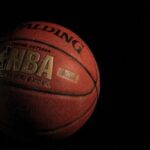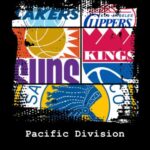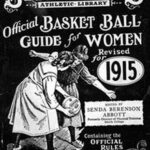The following is an excerpt from Glass Backboards: A Coast to Coast Anthology of American Basketball by Dr. Charles Ripp. To learn more, you can head to the Glass Backboards website.
Basketball is competitive fun, athleticism, and staying-in-shape and enhances all faculties of living (sleep, education, interpersonal relationships, dealing with defeat and team socialization). Playing basketball has a strong statistical association with stronger marriages, finances, and overall life satisfaction indices. There are issues at all levels of basketball.
The biggest hurdle is only 5 players on the court at any given moment from a single team. This is addressed strongly in many chapters; and overcome by coaching ground rules regarding players experiencing a true basketball adventure.
As coach, I reminded players and families that I would rather be a 7th man on a competitive hoop team playing 6- 7 days/week, working on my game, and alternatively not “hanging” in a mall or basement. Many 7th men on teams played in college and professional ranks.
Seventh man is motivation to improve and obtain playing time.
Glass Backboards – An Anthology of American Basketball is a compendium of historical and modern basketball. The work is intended to be a fun, yet educational read for sports fans and youth. Critical to basketball is the poignant history of players, teams, andcoaches. Major groundswells of support have surfaced from interested parties reviewing chapters.
The love of the sport and its many intricacies has led to myself championing basketball as a stand-alone American institution. Enjoy the chapters as you read along. Thanks for reading our work.
Brainstorming: Pre-NBA
The real story of the ICE AGE and Soft Touch
Introduction: Early November and Baseball is done – Ice is forming
After Naismith, hoops embarked on a crusade of escalating and varying pro and amateur leagues. The hoop movement began in the Northeast and spread like wildfire throughout the United States. A game that began to keep a group of young men at bay turned into a real winner.
Basketball became as addictive as Euchre is within the state of Wisconsin. Fans began to pay to watch schools and early pro teams. The magical rules of the game began to unfold with no national or international organizing body overruling. Medicine and soccer balls were rapidly phased out, and balls one could dribble entered the game.

Sacred Ground: Indiana Hoops
Trying out – Getting on the Roster
Pouring through the history of Indiana Hoops, I am hearing considerable chatter in my
deepest nerve cells. This subconscious chatter pertains to recurring thoughts and
images such as: why are your writing about Indiana Hoops?
There is nothing more to say! It no longer exists and is a potential fable anyway. Indiana basketball is in some minds an over glorified sports fantasy created, permeated, and continued by Hollywood and the media. Does Indiana basketball really rise above hoops in nearby states such as Wisconsin, Michigan, Iowa, Kentucky, or Illinois?
Bobby Knight? Puhhleese! What about all the thousands of “cut” players in Indiana? What effect has all this competition produced? I seriously doubt most of these Indiana hoopsters and their parents cut by IU feel that Indiana basketball is all that great.

Rucker Park
Many hoopsters have heard of Rucker Park. I have visited during a pouring rain while writing a story on Thompson’s dynamic “day the earth stood still” homer – occurring on October 3, 1951 at 1559. Rucker Park and the old Polo Grounds may qualify as the most historic few acres in sports history.

March Madness is on Its Game
Whoa……….March Madness is upon us and then poof………. gone. As I sat behind the Wisconsin bench in Albuquerque, I gave the game, the setting, players, coaches, and schools a bit of in-depth thought. We all know that only 2% of D1 college kids will ultimately play hoops for significant cash. And we already know who many of these kids are well before the lottery.
Therefore, by deduction and reasoning, March Madness is the athletic career pinnacle for 98% of the players. These are the nation’s best collegiate hoops players who have dedicated themselves to a sport since they were in kindergarten. Therefore, most collegiate players will leave competitive hoops and enter real life after a tearful hoop loss.

Epilogue - Final Locker Room Thoughts
On a cold snowy Wisconsin winter day during Christmas break getting through party phone lines to organize a basketball pick-up was uphill. somehow, the neighborhood kids connected. A nearby resident had a large two-story barn 2 blocks away.
I nearly killed myself riding a bike through a vicious snowstorm carrying a basketball to this barn. Upstairs within the barn was a full-court basketball court with decent wooden
floors. There was no out of bounds, zero area behind the basket nor ceiling room for lofted jumpers.
Shots were either short tear-drops, lay-ups, or flat trajectory shots. We always played as if we were Tommy Heinsohn, the Celtic legend who learned basketball playing at St. Joseph’s Catholic School in Union, NJ. The low ceilings on these old Catholic gymnasium courts were not built for hoops.
Players shooting from range had a low trajectory; and developing this part of your “game” enhanced your neighborhood image. These flat shots of Heinsohn were not trophy launches; but they repeatedly scored.
Heinsohn was snubbed originally by Boston Celtic Coach Red Auerbach and many others who felt he could not compete. These flat rangy shots of Heinsohn within the early NBA were felt by the very best keeping him from becoming an NBA superstar.
Tommy Heinsohn practiced relentlessly to get into the NBA and stay. This was the dedication to a sport he loved. A top Russian pianist told me prior to a performance he would play the most difficult measures 45 times over. This is the effort mastery of a skill requires.
Historically, in the 1957 NBA double overtime win by Boston over Bob Petit’s St. Louis Hawks, Heinsohn scored 37 points and was the MVP of Boston’s first NBA championship. Tommy Heinsohn was a childhood hero because while we were in the barn, we shot endless Heinsohn low trajectory shots.
Neighborhood kids netted thousands of shots from range despite the low barn ceiling. We left with splinters, cold outside, idolizing Tommy Heinsohn, and heartily enjoyed immense basketball competition from neighborhood kids’ organization/not parents. This was probably a better time.

Share This Article With Friends
More Basketball History Articles
What’s Behind The Knicks’ Upturn In form This Season?
There’s the famous saying that every dog has its day....
Read MoreHistory of NBA Team Nicknames: Pacific Division
I love the history of sports team nicknames. Today I...
Read MoreCheryl Miller – Greatest Women’s Basketball Player of All Time?
Imagine that you are one of the most skilled people...
Read MoreSenda Berenson and The First Women’s Basketball Game
The very first women’s game recorded happened only one year...
Read More



